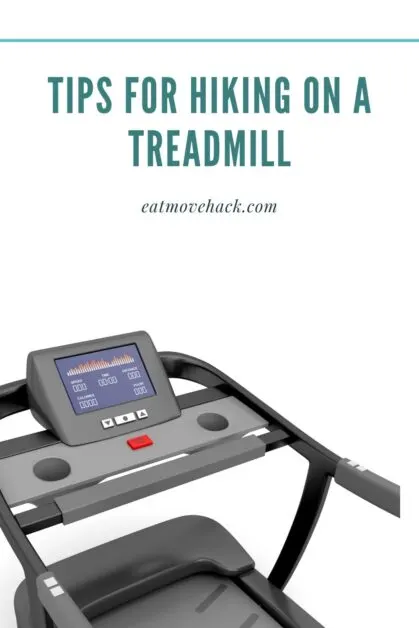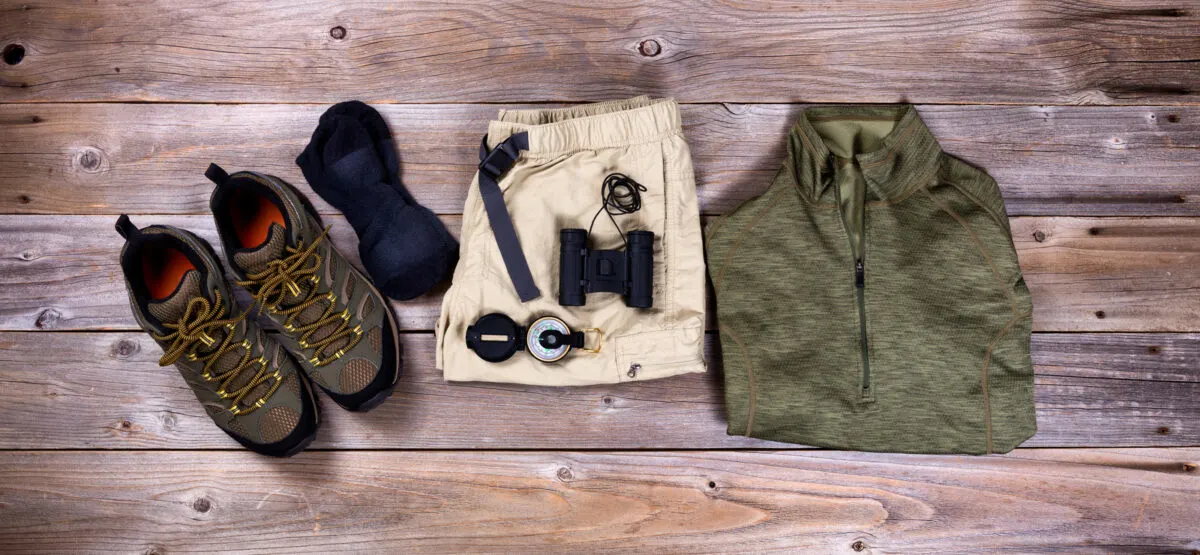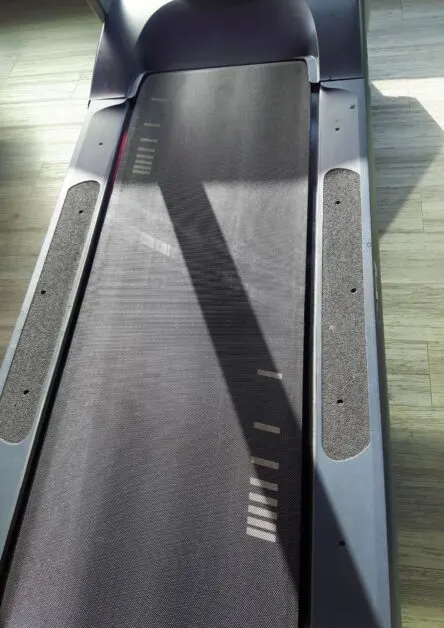Some of the links in this post are affiliate links. This means if you click on the link and purchase the item, we will receive an affiliate commission from the vendor at no extra cost to you. These business relationships allow us to keep bringing you great EatMoveHack content. All opinions remain our own.
Hiking is a vigorous form of exercise that takes you over varied terrain. Depending on your trail, you may find yourself traversing flat ground, gentle slopes, steep inclines, and other natural features that have you walking, jogging, crouching, and jumping before the trip is over.

If it’s been a while since you last went hiking, it’s a good idea to ready your body for the increased intensity that comes with this type of activity. While you could hire a personal trainer or fitness coach to help you develop your calves, glutes, quads, and core, treadmill exercises can help you accomplish the same thing without the added expense.
We’ve compiled some awesome tips for using a treadmill to help you get ready for your next hike. Use them to build the muscle and stamina you’ll need for the great outdoors, even if you’re stuck inside in the meantime.
The Benefits of Hiking Treadmill Workouts
Jumping on a treadmill to do hiking workouts before the big day has tons of benefits. At the very least, it will help you prepare mentally for the upcoming hike — you’ll go through all the motions so you know exactly what to expect.
Beyond that, performing particular workouts on a treadmill can help you strengthen muscles you don’t normally use, especially important ones in your legs, hips, and thighs. The training will improve your overall fitness level, too, leading to more strength and better flexibility so you don’t get too sore or hurt yourself.
Regular exercise combined with the extra challenge of high intensity intervals to challenge your aerobic threshold will also improve your body’s ability to use oxygen; this results in better stamina so that you won’t tire halfway through the hike.
5 Tips for the Best Hiking Workout on a Treadmill
Practice for your fun day outdoors by following our tips below. You’ll transform your treadmill from cardio accessory to hiking machine in just a few, simple steps.
1. Use the Treadmill’s Incline Feature
Because most hiking trails won’t consist of purely flat terrain, the incline feature on your treadmill can be a huge tool for helping you get used to the ups and downs that come with outdoor excursions.
To start, set your treadmill at a 1% incline. You should immediately notice the change as different muscles in legs and hips are activated. Continue at this incline for a few days to prevent injury, and then steadily increase the incline as far as your machine will allow.
DIY Treadmill Incline
Have a treadmill that doesn’t allow for inclines? No problem. If you’re handy, you may be able to use stacked 2x4s under the legs of the treadmill to increase the height at the front of the machine to create an incline. Note that not every treadmill can handle the increased load of inclined walking, so proceed carefully.
If you’d rather not adjust your treadmill, you can instead adjust the surface on which it sits. You can create an angled platform using plywood, or you can look for an area of your home that already has an angled surface, such as an exterior walkway or patio.
2. Don’t Forget About the Decline
Many hikers concentrate on the inclines they’ll encounter on their journey, but remember that every time you go up, you’ll need to come down.
Downhill hiking may not take as much energy as going up, but it does require the use of often-neglected muscles to maintain balance and traction.
While your treadmill may offer incline, many don’t have the opposite. However, to make the most of your hiking workout, you definitely want to practice going down hill.
This is another instance where you can use 2x4s to change the angle of your walking surface — this time, you’ll position the blocks under the legs at the back of the machine to pitch you forward.
3. Work on Building Endurance
Even short hikes tend to require more energy and stamina than going for a jog over flat land. To build the endurance necessary for a successful hike, you need to train your body to do a better job of taking in oxygen and using it to replenish your muscles.
To do this, you need to continually challenge yourself. This means exercising for longer periods of time and regularly increasing the intensity of your workout.
In practical terms, this could involve starting with 30 minutes per day of hiking training. After a week, increase to 45 minutes of activity, and after another week, bump it to 60 minutes.
4. Practice High Intensity Interval Training
Increasing the length of your daily treadmill training will help your body cope with demands of hiking, but you also have to vary the intensity of those workouts to really prep yourself.
This is easy to do if you have a treadmill that has preset programs. At the start of your workout, you’ll just hit a button and let the machine vary your speed (and possibly incline) for you.
If your treadmill isn’t so advanced, you’ll need to manually change settings to experience different intensities.
Whether you use existing programs or create your own, the idea behind high intensity interval training on a treadmill is to create a workout that involves longer stretches of leisurely walking interspersed with shorter periods that have you jog lightly, run, or sprint.
Remember that to prevent injury and keep from depleting your energy too quickly, you’ll want to limit your high-intensity periods to just a minute or two at a time.
5. Put on Your Hiking Gear
While it may seem silly to don all your hiking gear when using a treadmill indoors, doing so offers some huge advantages.

For starters, you’ll become accustomed to the weight, size, shape, and feel of your shoes, clothing, backpack, and accessories. It’s much better to break in boots or figure out that something doesn’t work or feel right before your hike than during it.
Another reason to exercise with your hiking gear is that you can use it as part of your hiking workouts. For example, when you first start your training plan, you might wear your empty pack just to get used to having it on you as you move.
As you progress through your treadmill training, you can fill your sack with items you’ll take on your hike, such as water, snacks, and tools.
Over the course of several weeks, add more until you’re working out with a weighted backpack. This helps build endurance and ensures that you have the strength to carry everything you intend to bring.

Conclusion
Hiking is an awesome way to burn calories, increase your heart rate, and improve your overall well-being. But it’s not the type of workout that you can take lightly — if you don’t properly prepare for a hike, you could find yourself out of breath halfway through the trip or too sore to keep moving.
Use our tips for hiking on a treadmill, and you’ll be ready to take on every step, twist, and dip of your next trek.
Don’t have a lot of room for your workout equipment? We’ve got you covered. Check out our guide to best folding treadmills to find something that won’t take up too much space.

